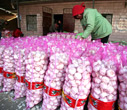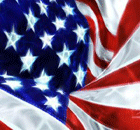Alexis Hooi
Serving up some fine food for thought
By Alexis Hooi (China Daily)
Updated: 2009-11-27 07:56

The news shook many in the top echelons of the global gastronomic world down to their very guts last week: The elite Michelin annual food guide had awarded more three-star ratings to Tokyo restaurants than the ones in Paris, effectively crowning the Japanese capital the new culinary center for most gourmets.
Since the century-old Eurocentric guide made its foray into Asia only recently, counting Hong Kong and Macao in its coverage apart from Tokyo, the Japanese revelation can also be seen as a delectable shift in the fine food world toward the East.
Still, the guide is not without its critics. Some say its secretive system of undercover inspectors, aimed at ensuring objectivity and fairness, leaves too much that is unknown to readers. Others point to its French roots and bias.
Even so, many stakeholders ranging from the food and travel sectors to the hotel and entertainment industries count the gourmet rating as one of the definitive guides for diners.
In many respects, haute cuisine is still considered high art - a reflection of the bounty of any civilization.
Where would Beijing - as the increasingly important capital of the world's fastest-growing market and one of its major cultures - stand in the latest movements in the global food scene then?
From emperor-approved Peking duck to the Man Han Quan Xi feast boasting more than 100 dishes of opulence, Beijing can surely hold its own against any foie gras or tuna-belly sushi.
Most visitors to Beijing also realize that the ubiquitous and essential Chinese corner takeouts in other countries do little justice to the real deal here.
But I suspect that many of them will also agree that the city's culinary scene has some way to go before it can count itself as one of the top players in the industry.
For one, at the foundation of what diners get on their plates lie the building blocks of safety and quality.
The China National Food Industry Association has said the food industry is expected to grow 16.7 percent year-on-year, with output value expected to top 4.9 trillion yuan ($717 billion) this year.
Output hit 1.82 trillion yuan for the first five months of this year alone, rising 14.6 percent over the same period last year.
Safety agencies have already inspected at least 1 million food manufacturers this year, with the rate of qualified food products hitting 98.5 percent in the first half of the year, authorities have said.
But in the capital itself, a recent study by the Beijing Women and Children's Development Foundation found that almost all of the parents in the nearly 3,000 families studied in the region's villages were still worried about the food their children ate.
With an increasing appetite that comes with fast-paced development and thriving demand overseas for Chinese foodstuff, the country's food safety agencies will continue to have their work cut out for them.
The public and private sectors will have to ensure safety and quality standards are met and maintained before there is any further development of the sector toward the high end.
And there is the service. Beyond the food itself, international benchmark setters such as the Michelin guide test such other aspects of eating establishments.
Aspiring to be included in these rankings will help Beijing and other bearers of Chinese cuisine beef up an area that is often lamented on by many foreigners.
Only then can the center of a great culinary civilization begin to take its place among the stars.
E-mail: alexishooi@chinadaily.com.cn
(China Daily 11/27/2009 page8)









